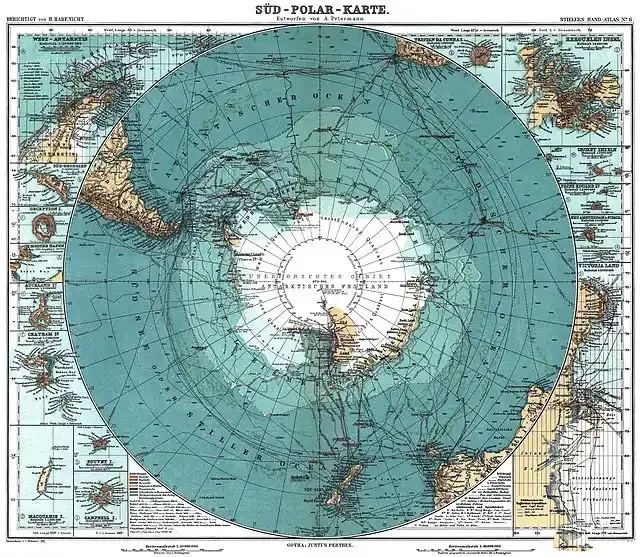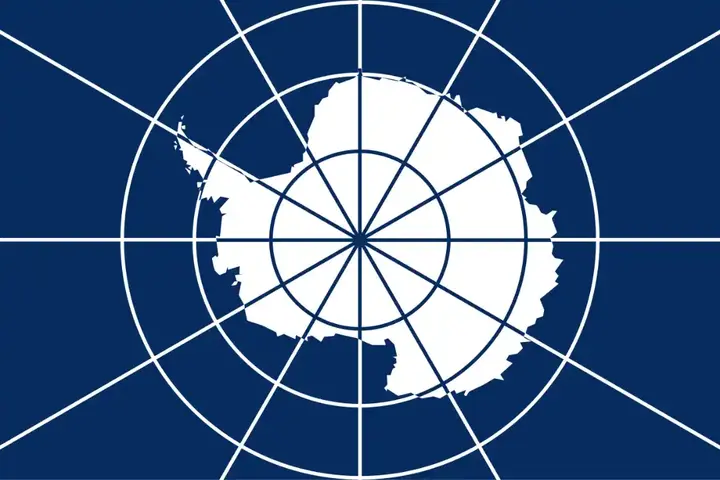History of Antarctica
Frozen, silent, and seemingly untouched — Antarctica may look like a blank page on the map of history, but beneath its icy surface lies a story millions of years in the making. From ancient supercontinents to heroic age explorers, *History of Antarctica* unravels the hidden past of Earth’s most mysterious continent. This journey through time reveals not just the evolution of a land of extremes, but also the enduring human fascination with the edge of the world.
Early geographical discoveries

Europeans began exploring the southernmost part of the Earth in the late eighteenth century for two main reasons: commercial gains and cartographic and magnetic lines. While seal hunters have drawn some island and sea routes in the Antarctica, they have kept this information secret so as not to reveal their fishing locations. The first seal hunters were mainly from Britain and the United States, but by the mid-nineteenth century, they were joined by South Africans, Australians, New Zealanders and French. These activities led to the almost extinction of the southern fur seal.
Recommend
Mapping the Earth's magnetic field, while simplifying navigation, was another major catalyst for these missions. Along with nationalism, geomagnetic survey was the main motivation behind the, for example, the British expedition of 1839–1843 led by British explorer James Clark Ross, which discovered the Ross Sea, the Ross Ice Barrier (now called the Ross Glacier Shelf), and the Victoria Land coast. The French expedition led by Jules Sébastien César Dumont-d'Urville from 1837 to 1840 discovered the land of Adély and later declared its ownership to France. The U.S. naval expedition, led by Charles Wilkes from 1838 to 1842, explored much of the coast of East Antarctica.
"Heroic Age" of Exploration

During the first two decades of the twentieth century, commonly called the "heroic age" of Antarctica, significant progress was made not only in geographical knowledge but also in the scientific knowledge of the continent. At the turn of the century, expeditions accelerated to explore Antarctica. The feasibility of wintering in Antarctica has proven and introduced new technologies. The Belgian ship Belgica, under the command of Adrien de Gerlache, became the first ship to spend the winter in Antarctic waters when it was trapped and drifted in the accumulated ice in the Bellinghausen Sea from March 1898 to March 1899. A scientific group led by Norwegian explorer Carsten e Borschgrevink spent the following winter at a camp in the Cape Adari for the continent's first planned winter.
The British National Antarctic Mission (1901–1904), led by British naval officer and explorer Robert Falcon Scott aboard the Discovery, set a new record for reaching the farthest point south when Scott, along with Anglo-Irish explorer Ernest H. Shackleton and English explorer Edward A. Wilson, reached 82°17′ S on the Ross Ice Shelf on 30 December 1902. Scott also boarded a restricted airship for aerial reconnaissance, and Shackleton first used motorized transportation at Cape Ruids, Ross Island, during the Nimrod Expedition (1907–1909). Other expeditions in the early championship era set off from France, Germany and Sweden. Some were privately funded, and some were funded by the state. Most of them were nationals of several States. The latter part of the championship era focused on the race to the South Pole and other first achievements in Antarctica.
Antarctic Treaty

With the end of the International Year of the South Pole, the threat of ending the suspension also arose, allowing the carefully planned structure in Antarctica to collapse into the chaos it had before the International Year of the South Pole. In the fall of 1957, the U.S. Department of State reviewed its Antarctic policy and reached agreements with the other eleven governments that were active in Antarctica during the International Year of Antarctica. On May 2, 1958, U.S. President Dwight D. Eisenhower issued identical memoranda to these governments proposing a treaty to ensure a free and peaceful status for the continent. The 12 governments held preparatory talks in Washington, D.C., beginning in June 1958 and lasting for more than a year. A final conference on Antarctica was held in Washington on October 15, 1959. Agreement on the final draft was reached within six weeks of negotiations, and the Antarctic Treaty was signed on December 1, 1959. Following final ratification by each of the twelve governments (Argentina, Australia, Belgium, Chile, France, Japan, New Zealand, Norway, South Africa, the Soviet Union, the United Kingdom and the United States), the treaty was enacted on June 23, 1961. The Antarctic Treaty was an unprecedented milestone in political diplomacy: it preserves the entire continent for peaceful purposes and scientific research. The Treaty also declares the continent the world's first nuclear-weapon-free zone and deals with the issue of territorial claims in an innovative way.
Article I of the Treaty provides for the peaceful use of Antarctica; Article II provides for international cooperation and freedom of scientific research; Article III provides for the free exchange of plans, scientific findings and personnel; Article IV for non-waiver of previous claims and for the prohibition of new claims and the invocation of any activities during the term of the Treaty as a basis for past or future claims; Article V for the prohibition of nuclear explosions or waste disposal; Article VI for the application of the Treaty to all areas south of 60° latitude Article VII for open inspection of the operations of any State in Antarctica by any other State; Article VIII for jurisdiction relating to the acts of nationals of any State while in Antarctica; Article IX for providing for periodic meetings and the preparation of reports in relation to science, legal matters, resource conservation and international relations; and Article X for the obligation to make appropriate efforts by the Contracting Parties to prevent activities contrary to Treaty; Article XI for referral to the International Court of Justice if the parties concerned are unable to settle it through peaceful negotiations or arbitration; and Article XII for the revision of the Treaty after it has entered into force for a period of 30 years if any Contracting Party requests such revision.
![]()
Polar bears and climate change: the threatened future of Arctic icons
Polar bears, majestic symbols of the Arctic, face a deeply troubling future as climate change melts their icy habitat, disrupts their food sources, and puts pregnant females at greater risk. With shrinking ice and rising temperatures, their survival grows harder, making urgent global action vital to protect these stunning creatures. more- ADVERTISEMENT
![]()
Traditional Syrian Glass Blowing : A Timeless Craft
Traditional Syrian Glass Blowing : A Timeless Craft more- ADVERTISEMENT
![]()
Why does the Arab lands have so much oil?
Arab countries hold vast oil and gas reserves, with fields like Saudi Arabia’s Ghawar and Safaniya standing out for size and output. Their conventional oil is easier to extract and purer than other types. This wealth stems from rich ancient biodiversity buried under the region's lands over millennia. more- ADVERTISEMENT
![]()
Blood test uses 'protein clock' to predict risk of Alzheimer's disease and other diseases
Blood test uses 'protein clock' to predict risk of Alzheimer's disease in others more- ADVERTISEMENT
![]()
Why is the oud so popular in the Middle East?
The oud, with its deep roots in ancient Persia and warm, resonant sound, inspired the development of Western instruments like the guitar. Its fretless design gives Arabic music a unique depth, and its influence reached Europe through Andalusia, where it shaped musical traditions far beyond the Middle East. more- ADVERTISEMENT
![]()
Genetically engineered microbes: the future of sustainable agriculture
Genetically modified microbes are transforming farming by boosting crop growth, nutrient absorption, and resilience to stress. These tiny allies can cut chemical use, fight pests naturally, and even help tackle climate change—offering a smart, sustainable path forward for agriculture. more- ADVERTISEMENT
![]()
First Steps to Investing: Practical Tips to Build Your Wealth
Starting your investment journey? Learn the basics, explore different asset types, and build a balanced plan tailored to your goals and risk tolerance. Stay patient, diversify wisely, and avoid common mistakes like investing with borrowed money. Smart moves now can shape a brighter financial future. more- ADVERTISEMENT
![]()
The most expensive mistakes in history
The most expensive mistakes in history more- ADVERTISEMENT
![]()
Saving and portfolio diversification - concepts you should know
Saving & Financial Portfolios Diversity - Concepts you should know more- ADVERTISEMENT
![]()
The human heart shows signs of aging after just one month in space
Heart tissue sent to space by Johns Hopkins scientists showed weakened contractions, slower beats, and aging-like changes within a month. The "Heart on a Chip" study reveals how microgravity affects heart health, offering clues for astronaut safety and potential treatments for heart conditions back on Earth. more- ADVERTISEMENT





















